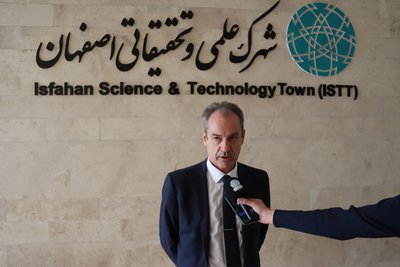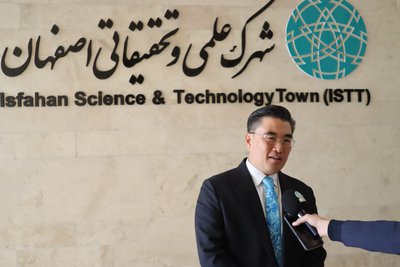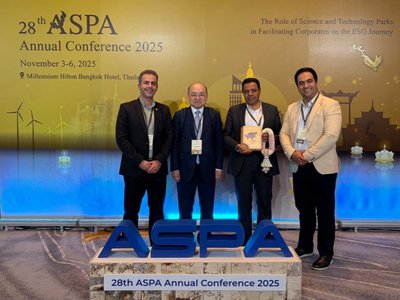-
ISTT Heads Restoration of Anzali Wetland
- May 26, 2019

Isfahan Science and Technology Town (ISTT) has managed to partially restore Anzali Wetland in a project proposed and backed by researchers at a resident company at ISTT, Nano1 Co.
In the past, Anzali Wetland provided about 70% of the commercial fish taken in Gilan Province, with catches of over 5,000 tons annually. However, a number of factors have acted against the continuation of the fishery.
Heavy siltation from increased upstream irrigation over the years has resulted in the shrinkage and shallowing of the wetland. The increased pollution of source waters and eutrophication due to an increased nutrient load have also contributed to the destruction of the fishery.
More recently the surface of the wetland had also become gradually overgrown with aquatic macrophytes, primarily the non-native water-fern, Azolla filiculoides, and this has caused increased eutrophication, creating large areas of the lagoon where there is insufficient dissolved oxygen for fish to survive.
As Anzali is one of the few Iranian wetlands which have been registered as an international wetland in the 1975 Ramsar Convention, the most biologically diverse of all ecosystems, its preservation has become a subject of most importance in Iran. As such, the Ministry of Science, Research and Technology (MSRT), ISTT and University of Tehran in collaboration with the provincial government and environmental agency of Gilan have combined their forces to remedy this serious natural tragedy.
As an outcome of this committee ISTT was chosen to revive the wetland via BioGME organic matter, a technology developed by its resident company. The technology developed by Nano1 has the ability to increase organic matter load in water and supply materials needed for the photosynthesis cycle, increase photosynthesis zone depth, supply the needed oxygen by controlling photosynthesis-respiration process, and reduce the amount of aquatic solid waste and control BOD& COD in aquaculture environments.
ISTT has been using a BioGME accelerated Bioremediation method for the regeneration of the wetland over the last year. The results attained have shown much improvement and have led to the expansion in use of this method of restoration to a further one thousand hectares of the wetland in the following year and the remaining twelve thousand hectares of the lagoon for the years 2020 and 2021.
visit count : 952 Date: May 26, 2019
Most Viewed
users comments
no comment yet


